As you probably know by now, MERIT recently launched a new fragrance, Retrospect, which is one of the biggest beauty releases of the year. The scent, developed in partnership with perfumer Fanny Bal, pays homage to iconic vintage fragrances:
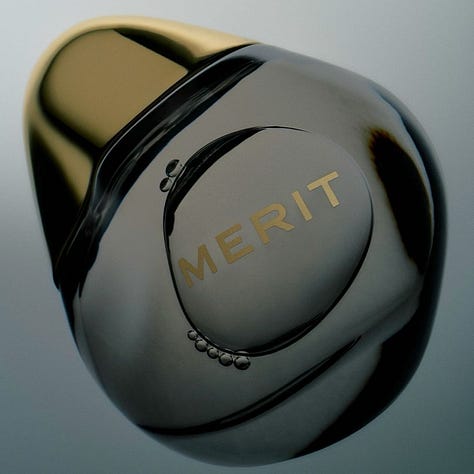
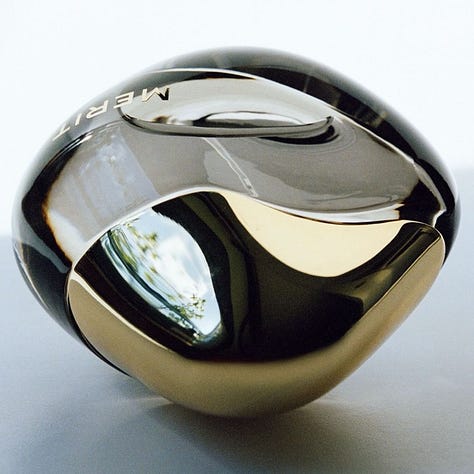
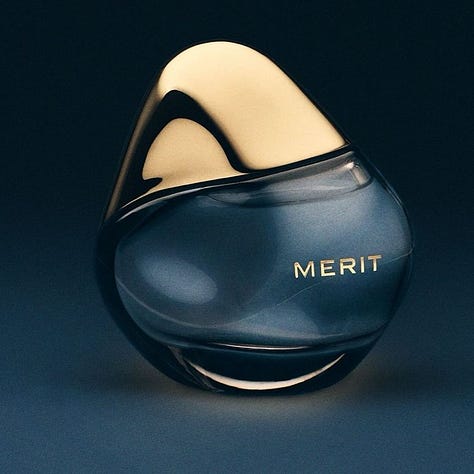
As a L'Extrait de Parfum, it’s designed to last and evolve throughout the day, opening with notes of bergamot and pear, followed by jasmine, rose, and violet, and finishing with a base of vanilla, musk, and moss. Beyond the fragrance notes, the bottle itself is stunning, inspired by minimalist '90s jewelry:
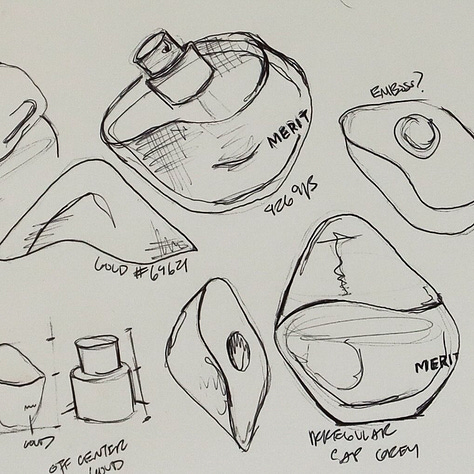
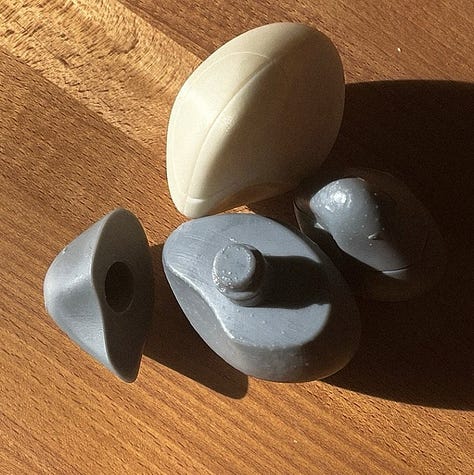
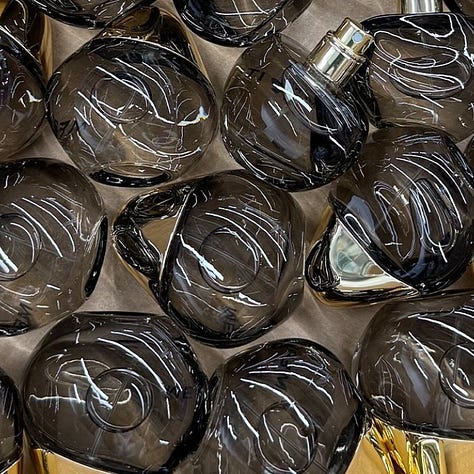
If you’re interested in learning more about the intricacies of the fragrance, we highly recommend reading some of the other interviews the MERIT team has done to promote this launch. Today, our job is to dive into the inside scoop on the campaign, from the overall strategy, to creative and visual executions, and everything in between.
To set the foundation, the campaign was “all about perspective,” in the words of MERIT. That means, while most perfume marketing is centered around a specific occasion or prescriptively telling you who to be when you wear it or how to feel, they chose to partner with different members of their community - from creators to talent and publications - to tell the story of the fragrance from their own perspectives. And this brings us to the focus of today’s piece.
We had the honor of chatting with MERIT’s Chief Marketing Officer, Aila Morin, about this approach and the overall launch. A huge shoutout to Ally Frankel and Vanessa Krooss for helping coordinate and bring all the pieces together.
Similar to our other pieces, this article will be divided into the following three sections: Creative Direction, Partnerships, and Physical Pop-Ups, in that order. If you work at a brand, love good marketing or advertising, or are simply a fan of MERIT, this piece is for you. We hope you enjoy it! Now, let’s get started:
CREATIVE DIRECTION
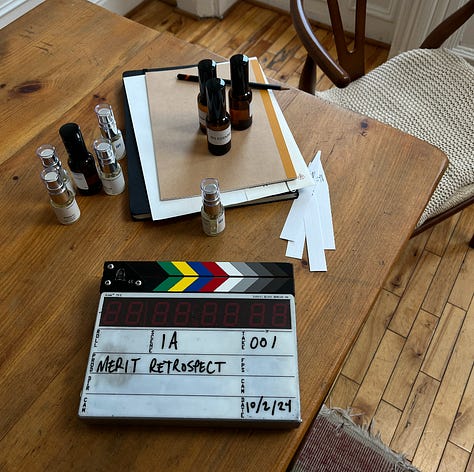
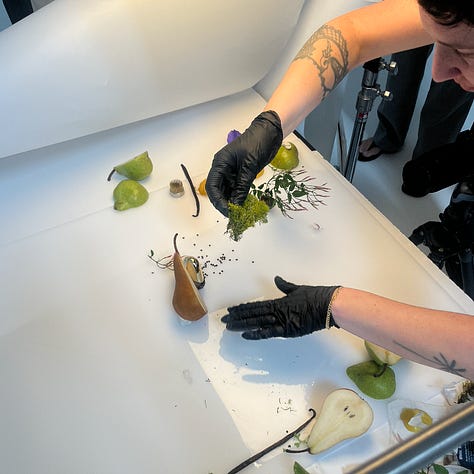
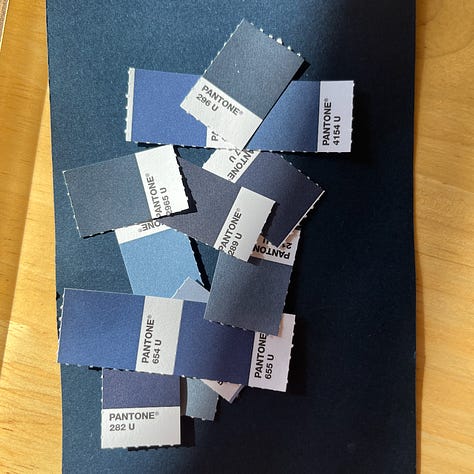
A glance at the visual universe of this campaign reveals a moodier departure from MERIT's usual light and bright aesthetic, while still maintaining the brand's elegance and sophistication. It evokes strong emotions - passion and richness - that reflects the complex nature of the fragrance itself. The product itself is more than just another perfume; it stands for something deeper.
This depth and soul don’t just come across in the images shared on social media, but also in the content they created for print magazines (more on that later) and the broader advertising efforts they invested in for this launch. That’s the true beauty of their work. Every piece feels cohesive, like a portal into the same world.
We chatted with the team about how they bring such work to life internally, the mood board that inspired the campaign, and their approach to rolling it out across platforms. Here’s everything they shared:
PEOPLE BRANDS AND THINGS: Can you explain how campaigns come to life at MERIT, especially for new launches? What does the creative process involve, and how do the internal teams collaborate?
Aila Morin: The starting point for a launch campaign actually begins at the product conception stage. When we started considering doing a fragrance back in 2021, only 6 months into launching the brand, it was born from an emotional whitespace. At the time – which has remained true even today – there were a few clear paths for fragrance. You had linear, literal scents that could be communicated digitally in simple imagery (ex. main note is orange, so you see an image of oranges) to reduce friction and increase conversion; scents from fashion houses with a campaign starring a celebrity running down the streets in Paris who you’re supposed to want to b (with no context on what it smells like); and complex, niche fragrances that are hugely expensive and inaccessible.
With that in mind, we began developing a rich, nuanced fragrance, that happened to be clean, and concentrated as an extrait de parfum to give a long wear time (like all fragrances used to be made). The marketing story always builds off of the product positioning – I usually start drafting it years before the product actually comes to life, pulling references and distilling what the thesis is. All of our teams work backwards from this concept – as CMO, I sit across our Creative, Marketing, and PD teams, which allows me to be involved in every step of a campaign and ensure that the thesis is kept top of mind throughout. From there, we work as a team, solidifying our thesis, ensuring that the product meets the promises we’re making, designing the packaging and end to end experience. This all feeds into the narrative both visually and in storytelling, to create a clear POV on why a product is special and how it benefits our end consumer.
For larger launches like Retrospect, which marks our entry into a brand new category, we always try to test out new strategies and see how our audience reacts. I roughly think of this as the 80-20 rule – 80% of what we do is well-tested and backed by data, and then 20% are big swings that are a bit more out of left field. While not everything in that second 20% will hit, it’s important to keep trying new things creatively to prevent our marketing from getting stale. It’s also what builds an emotionally resonant story because so often, the medium and message don’t quite fit together.
Ultimately, we try to put ourselves in our customers’ shoes and think about what would deliver surprise and delight as consumers and the different avenues available to us for storytelling – sometimes that’s a collaboration, an event, a partnership, or, for larger moments, perhaps all three. Retrospect was also a fun moment to explore unconventional tactics, like writing a book, hiring all female photographers to shoot OOH, doing sampling prior to launch – which are bigger risks, but often are the most creatively fulfilling.
In addition, most of our larger campaigns are social commentaries – it’s always been the backbone of work that I’ve done, whether it was “Diamonds for your damn self” during my time at Mejuri or launching a fragrance without a celebrity face that isn’t as linear at MERIT. We skipped the celebrity spokespeople and the expected ways of marketing, and instead focused on how it would make people feel. We honed in on the personal nature of fragrance and individual perspective – and highlighted that with creative talent that had free reign to share their view. Ultimately, each piece of content built into a larger narrative – making women the narrator rather than the subject, creating a new perspective on modern fragrance.
PBT: Could you share more about the mood board that inspired this campaign? Why go with a darker, more moody look and feel?
AM: I’ve been saving fragrance ads since I was a kid – I worked at a beauty counter from high school through university, and got to set up the displays sent in by big brands. I’d place the bottle, the artwork, the sample cards on pedestals at the front of the store and it became so clear to me how important the tactile details around fragrance are.
After compiling a ton of different ads from years prior, clipping out of magazines, we started to think of how MERIT fits into this world and how the story fits the visual. The departure to navy blue felt like a richer extension of our “MERIT blue” Pantone that is a brand signature – with a backlit bottle on navy, it also felt both deeply 90s and incredibly modern at the same time. Personally, it’s the color that has always reminded me of my grandma, who was the woman who introduced me to perfume, so in a way it was always in my head as a visual representation of nostalgic beauty. The result is a meeting point between classic vintage product photography and a sharp, minimal, modern aesthetic.
We tend to give campaigns a unique color story, building a clear world for each launch. It helps to pull the brand apart from copycats, as launching in an innovative way that we haven’t done before means we get to do it first.
PBT: In addition to social media, can you discuss your approach to campaign roll-out across platforms, like the NYT spread and potential future OOH efforts? What role does each channel play, and how do you think about storytelling for each?
AM: As we crafted both the fragrance and the campaign, we thought about an old-school way of storytelling that goes beyond today’s traditional marketing playbook. We created a vintage-inspired fragrance, and we wanted to market it in vintage ways – and candidly, CPMs have never been higher, so shifting spend into analog places makes a ton of sense. From a marketing perspective, each channel has its own unique needs, but our overarching goal is to have them all evoke the same feeling. Fragrance is so personal and emotional, and we wanted each channel to be really feelings-led as well.
We also know that our core demographic isn’t hyper-online, and we want to meet them where they’re at – providing multiple touchpoints that don’t rely on the swipe of an Instagram feed. We used a lot of tactics, but I’m most proud of:
We took out scent strips (a real throwback) in Real Simple and Vogue, allowing customers to smell Retrospect before buying
You can find our Retrospect billboards across key cities, showcasing the photography of our five campaign partners IRL
We collaborated with Gentlewoman, a leading fashion publication, on a limited-edition book that celebrates the art of fragrance
The NYT back page was our full, written out thesis; a place to share more written work on perspective
We offered samples on our site for two weeks prior to launch, so people could try it and share their impressions – and embraced when people shared they didn’t like it! The mark of a good perfume is that it’s polarizing – instead of making something linear and safe, we wanted something that some people would truly love and some people wouldn’t identify with.
We also engaged digital with a TikTok top-of-funnel buy-out across our key demographics for the first few days, paired with sampling to our community for their feedback and reviews.
PARTNERSHIPS
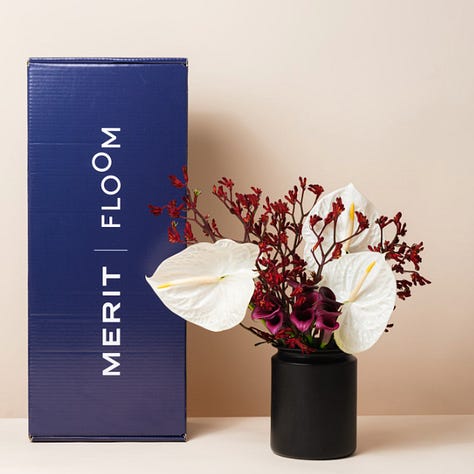
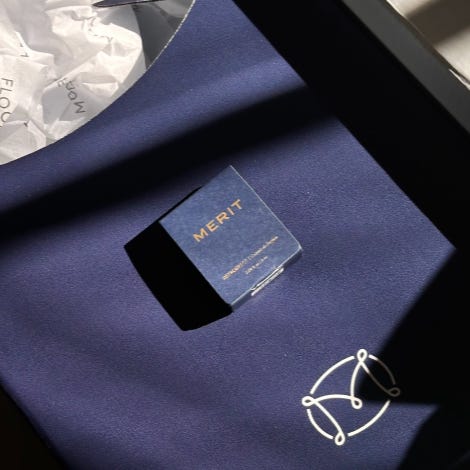
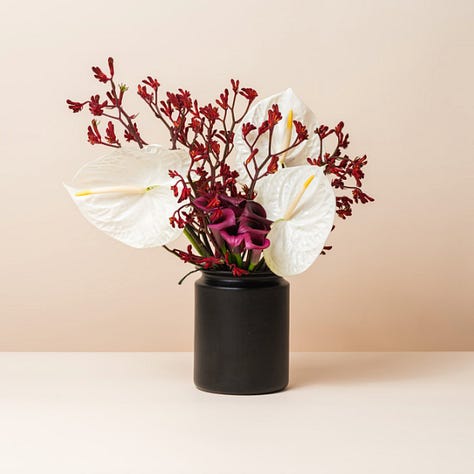
At its core, this campaign was built on a wide range of partnerships, bringing together people from diverse backgrounds, from journalists to poets, each with expertise in different mediums, from newsletters to videos to print. While the subject matter was the same, each of them told the story in their own unique way. Since collaborations are our favorite topic to cover, we had to ask them all about their curation and creative process.
PBT: You’ve spoken about how you’ve invited your community to share their perspectives on the product, telling the fragrance's story in their own words. Can you describe the curation process - how did you select the individuals and the mediums through which they contributed?
AM: We wanted to highlight creatives across a variety of mediums who inspired us. We sourced within our community for artists that felt aligned with our vision – we have cultural critics like Emily Sundberg, poets like Fong-Min Liao, photographers like Lauren Bamford, and fashion leaders like Gentlewoman. Ultimately, our goal was to give them as few guardrails as possible and allow them to each create in their medium based on the scent and the prompt of how to rethink modern fragrance – both the marketing and the product itself.
PBT: One of your partnerships consisted of working with The Gentlewoman on the development of a coffee table book. Can you share insights into the creative process behind the pages of the book?
AM: It was critical for us to work with a partner that we trusted, both editorially and creatively, to produce the Retrospect Book and we have always admired the team at The Gentlewoman – again, giving creatives space to build their own perspectives and share them through their lens was the backbone of the campaign. We gave background on the development process of Retrospect, the fragrance notes, and our thoughts around the core narrative of the launch – otherwise, their team had pretty free reign to shape the end product. It took over 6 months to create the book, during which time we worked collaboratively with Gentlewoman, but there were very few times that we gave specific guidelines of what needed to be included or what shouldn’t be. The one element that was critical to us, which Gentlewoman wholeheartedly agreed on, was spotlighting our perfumer Fanny Bal, who was absolutely crucial in making Retrospect come to life.
PHYSICAL POP-UP
In addition to social and print, MERIT leveraged partnerships to create physical pop-up experiences, enabling consumers to immerse themselves in the world of the new product. Ahead of the launch, they collaborated with Floom on a pop-up flower cart that offered free bouquets featuring florals found in the fragrance, along with samples of Retrospect. They made this accessible to everyone online by creating a limited-edition bouquet available for purchase via Floom, which included flowers from the fragrance. Here’s what Aila shared about their goals for physical activations and what’s to come.
PBT: What are your goals for the physical activations tied to this launch? Is it about creating an in-person experience for people to try the fragrance, reinforcing product ingredients, community building, or something else? Anything fun to come?
AM: Community building is something we’re continually invested in as a brand. In our minds, “community” includes collaborators we work with, our loyal brand fans, and members of the general public who have yet to try MERIT – it’s crucial for our activation strategy to reach all of these groups. “Influencers” to us aren’t just those who create content professionally – but our entire community. Our strategy always welcomes those perspectives both on feedback and for launches.
Fragrance is a harder product to market and sell than anything we’ve previously done, because you can’t smell through a screen! With our community activations for this launch, it’s really about giving people the opportunity to smell the fragrance in-person. That’s why we activated fragrance and floral sampling, and our art gallery party – so people could smell Retrospect, and also so we could interact with our community and get a sense of how the scent is resonating with people.
Thank you to the MERIT team for chatting with us. Every touchpoint of this campaign was so thoughtfully and beautifully executed, a true testament to the quality of their work. Without getting ahead of ourselves, given their minimalist philosophy on beauty, we’re curious to see if they’re planning to expand the fragrance line or focus entirely on Retrospect as a less-is-more, essentials-only approach. Our bet is on the former given how excited people are, but time will tell - and we’ll be covering it all!
Want to submit a pitch? Email (or DM) us: peoplebrandsandthings@gmail.com




